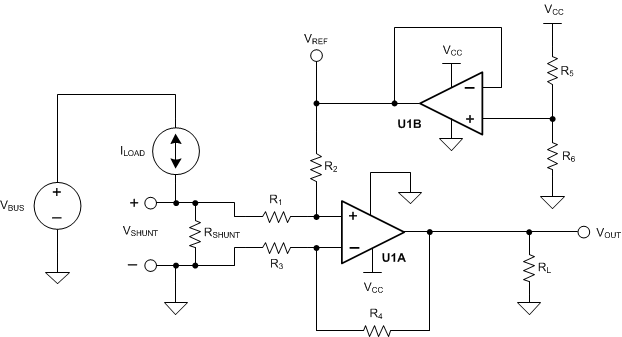SBOS926G January 2021 – April 2024 OPA2392 , OPA392
PRODMIX
- 1
- 1 Features
- 2 Applications
- 3 Description
- 4 Device Comparison Table
- 5 Pin Configuration and Functions
- 6 Specifications
- 7 Detailed Description
- 8 Application and Implementation
- 9 Device and Documentation Support
- 10Revision History
- 11Mechanical, Packaging, and Orderable Information
Package Options
Refer to the PDF data sheet for device specific package drawings
Mechanical Data (Package|Pins)
- D|8
- DGK|8
- YBJ|9
Thermal pad, mechanical data (Package|Pins)
Orderable Information
8.2 Typical Application
This single-supply, low-side, bidirectional current-sensing design example detects load currents from –1 A to +1 A. The single-ended output spans from 110 mV to 3.19 V. This design uses the OPA392 because of the low offset voltage and rail-to-rail input and output. One of the amplifiers is configured as a difference amplifier and the other amplifier provides the reference voltage.
Figure 8-1 shows the schematic.
 Figure 8-1 Bidirectional
Current-Sensing Schematic
Figure 8-1 Bidirectional
Current-Sensing Schematic